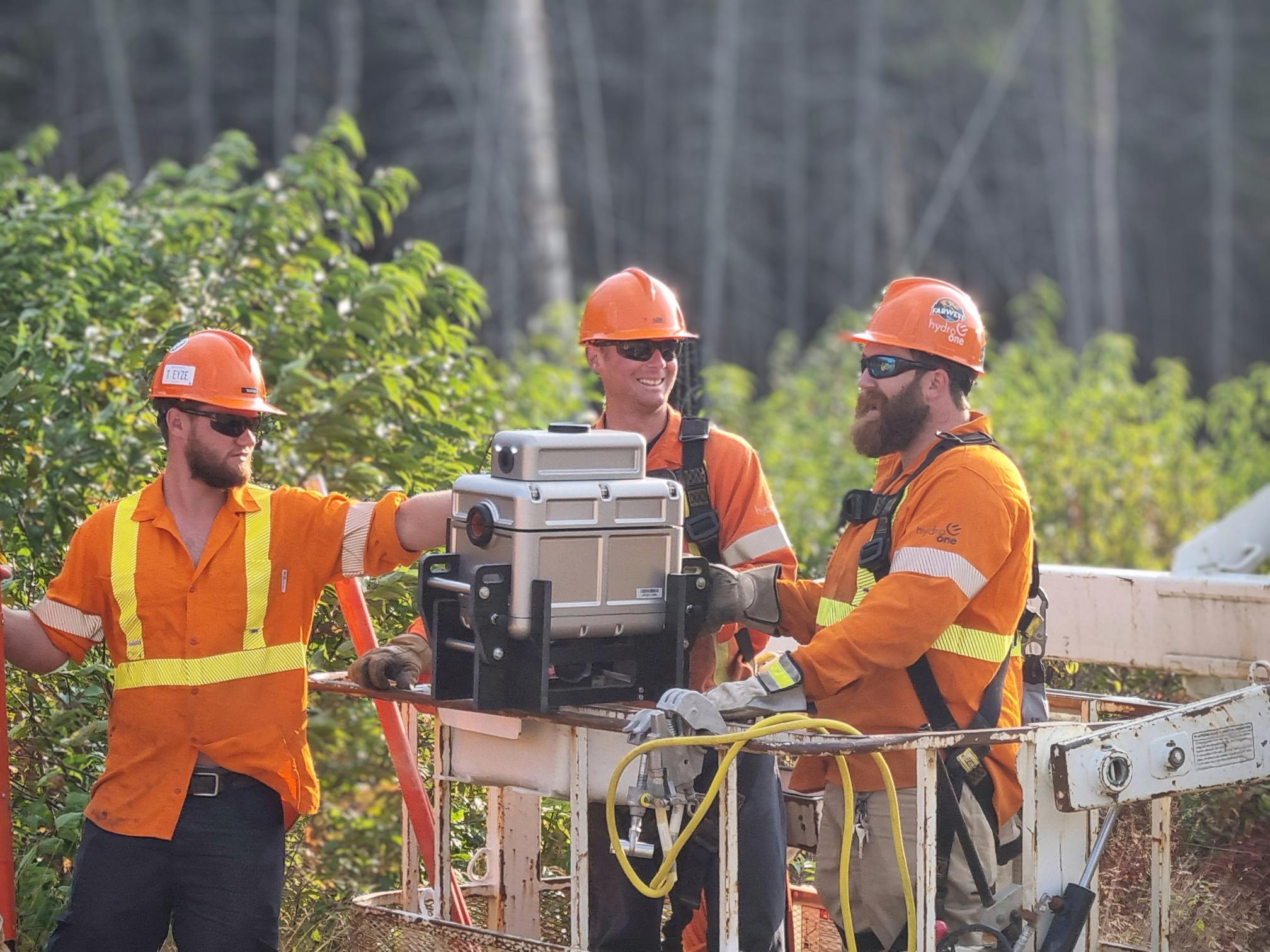Soluciones > Calificación Dinámica de Líneas
Optimice el rendimiento de transmisión con datos de línea del mundo real y pronósticos de capacidad precisos. La solución DLR de Laki Power ayuda a las empresas de servicios públicos a maximizar de manera segura el rendimiento, reducir la congestión y extender la vida útil de los activos.
+40% capacidad
Desbloquee la capacidad oculta utilizando datos meteorológicos y de línea en tiempo real y localizados, sin necesidad de costosas actualizaciones de infraestructura.
Mediciones locales
Al medir con precisión la temperatura del conductor, los efectos de enfriamiento del viento y la tensión, puedes extender tus líneas de manera segura mientras te mantienes completamente conforme a las normativas.
Pronósticos de capacidad
Utiliza herramientas avanzadas de pronóstico para predecir las horas y días de capacidad disponibles, lo que permite una planificación más inteligente y decisiones operativas.
Cómo funciona
Mediciones directas del viento para clasificaciones de línea precisas
Mide lo que importa - justo en la línea
El viento es el factor más significativo en la refrigeración de conductores, influyendo directamente en la capacidad de transmisión. Aunque las API meteorológicas tienen dificultades para estimar las condiciones del viento con precisión, el LKX-MULTI mide la velocidad y dirección del viento directamente desde el conductor en tiempo real. Esto garantiza calificaciones de línea dinámica precisas, ayudándole a desbloquear de manera segura hasta un 40% más de capacidad sin arriesgar un sobrecalentamiento o daños en la línea.
Predicciones más inteligentes con Laki Analytics Studio
Planifica con anticipación con datos en los que puedes confiar
Laki Analytics Studio combina datos de sensores en tiempo real con herramientas de pronóstico avanzadas, brindándote una visión clara de la capacidad actual y el potencial futuro. Toma decisiones informadas sobre el desplazamiento de carga, los recortes y la programación del mantenimiento, maximizando la eficiencia de la red mientras mantienes la seguridad y el cumplimiento.
Modelos de Clima vs. Medidas Reales
¿Por qué conformarse con estimaciones cuando puedes tener los hechos?
Las API del clima funcionan para estimaciones básicas de temperatura, pero cuando se trata de viento—responsable de hasta el 80% del enfriamiento de los conductores—se quedan cortas. Los estudios muestran que los cálculos de DLR basados en API pierden casi el 40% de la varianza crítica en comparación con las mediciones directas.
¿Cuántos sensores necesitas?
No te preocupes, nuestro equipo de expertos te guiará paso a paso para asegurar que tu cuadrícula esté completamente cubierta. Aquí hay cinco criterios que utilizamos para determinar el número de sensores necesarios.
¿El terreno es montañoso o llano?
El terreno puede afectar la distancia al suelo, por lo que los sensores deben colocarse en puntos críticos donde una baja distancia al suelo o un terreno variable puedan afectar la seguridad y el rendimiento de la línea.
¿Existen diferentes secciones de conductores?
Asegúrese de que cada sección del conductor, especialmente las limitantes, tenga al menos un sensor para monitorear el rendimiento.
¿Es el viento significativo en ciertas áreas?
Sensores de posición donde el viento afecta significativamente el enfriamiento de la línea, con menos sensores en secciones más rectas.
¿Varía la temperatura a lo largo de la línea?
Dado que las variaciones de temperatura son mínimas a distancias cortas, es suficiente colocar sensores aproximadamente cada 10 km para monitorear estos cambios.
¿Están sus líneas eléctricas en áreas propensas a incendios forestales?
Las utilidades a menudo colocan sensores por razones más allá del DLR.
Preguntas Frecuentes
Encuentra respuestas a preguntas frecuentes sobre nuestra solución DLR para ayudarte a tomar decisiones informadas sobre tus necesidades de red.
¿Quieres aprender más?
Echa un vistazo a nuestros artículos profundos sobre DLR

Guías
•
7 oct 2024
¿Pueden las APIs de clima cumplir con los estándares de FERC?
¿Pueden las API meteorológicas reemplazar los sensores locales para Clasificaciones Dinámicas de Líneas (DLR) compatibles con FERC?

Guías
•
16 sept 2024
Calificación de Línea Dinámica (DLR)
La Calificación Dinámica de Líneas (DLR) es un método utilizado para determinar la capacidad máxima de una línea de energía en tiempo real. Permite a los..

Cobertura mediática
•
20 jun 2024
DLR es más que optimizar la capacidad
DLR debe priorizar la seguridad, no solo la capacidad. Nuestro CEO explica en POWER por qué los datos meteorológicos precisos son clave para operaciones de red.










